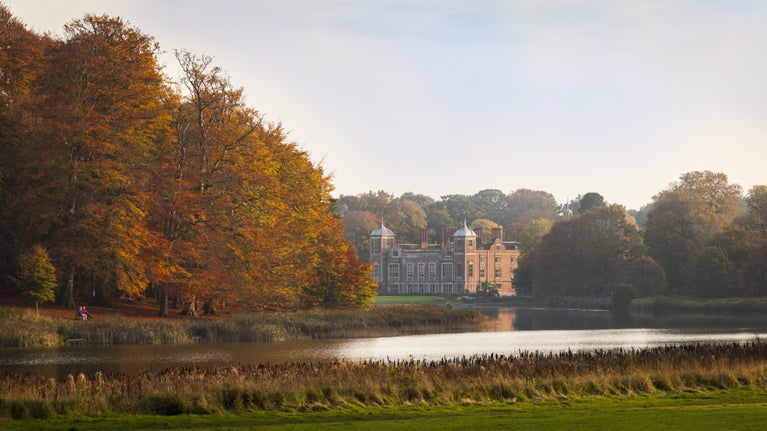
For everyone, for ever
We protect and care for places so people and nature can thrive. Find out who we are and what we stand for.

Wild flowers have been a feature of the British landscape for centuries, and appear in mythology and magic, science and art, history, and anthropology. Discover the stories behind some famous wild flowers and find out why they’re so important for the environment.
One of Britain's most diverse habitats, wildflower meadows can contain up to 40 species in one square metre. They attract pollinating insects such as bees, beetles, butterflies, and moths, which make wild flowers valuable for food crops. You can also find spiders, reptiles, amphibians, bats, and birds in meadows.
Wild flowers hold on to rainwater, help combat flooding, and accumulate vast amounts of carbon. Sadly over 97 per cent of our wildflower meadows have been lost since the 1930s. This is the equivalent of 3 million hectares (7.5 million acres). The habitat now makes up just 1 per cent of the UK. We continue to work hard to protect, conserve and restore wildflower meadows and other grasslands in the UK.
Some of our most well-known wild flowers are vital for different insect species and brimming with history and stories.
I love all wild flowers (none are weeds with me).

There are 200 micro-species of dandelion, which are visited by 93 species of insects including 15 types of moth. The dandelion is nature’s great healer, and its medicine was recommended by Arab doctors as far back as the 11th century. It contains more vitamin B, C and A than many vegetables and fruit and has a range of health benefits.
Dandelion root cleanses the liver and it can treat gout, joint pain, and reduce high blood pressure. It can also be used to make coffee. In fact, this was a popular alternative to real coffee during the Second World War.
In the 15th century hops were described as ‘a wicked and pernicious weed’, and there were strict penalties for using the bitter flower to make beer. But during the reign of King Henry VIII this all changed. By 1524 commercial quantities were being introduced from Flanders to be cultivated in England.
Hops soon replaced other plants as the basic ingredient of beer as they made it last longer (hops have an antibacterial effect, which acts as a preservative). Today, hops are grown in the West Midlands and South East, where they’re harvested and dried in oast houses.

The primrose is the ‘first rose’ of spring and a symbol of Easter’s new life. Its pale flowers light up damp, shady places in deciduous woodland, sprinkling grassy banks and hedgerows from March to May. When former Prime Minister Benjamin Disraeli was dying, Queen Victoria sent him primroses from Balmoral, picked by her own hand.
Disraeli had a regular habit of wearing a primrose in his buttonhole, and in 1882 Primrose Day was established on 19 April. Ever since Disraeli’s statue in Parliament Square has been decked with primroses.
Violets are vigorous spreaders along woodland edges, in clearings and ancient hedgerows. Grown in pots since the earliest times, violets were cultivated in medieval and Elizabethan knot gardens and used as strewing herbs. Shakespeare mentions violets no fewer than 18 times in his works.
This wild flower is a valuable umbrella species. Its habitat shelters a range of other creatures including spiders, lizards, hazel dormice, scrub warblers and many species of butterfly. They’re the food plant of fritillary butterfly larvae, including the high brown and the pearl-bordered fritillaries. These beautiful butterflies are in decline due to the loss of open sunny habitats that violets love.

We protect and care for places so people and nature can thrive. Find out who we are and what we stand for.
Ancient trees are links to our past, they're species-rich habitats that support countless other organisms. Discover what makes a tree ancient and how to recognise them.

Fungi play a vital role in the natural world, helping break down organic woodland material as part of the decomposition process. Learn all you need to know about these important organisms.
